A little rhino beetle tells a story
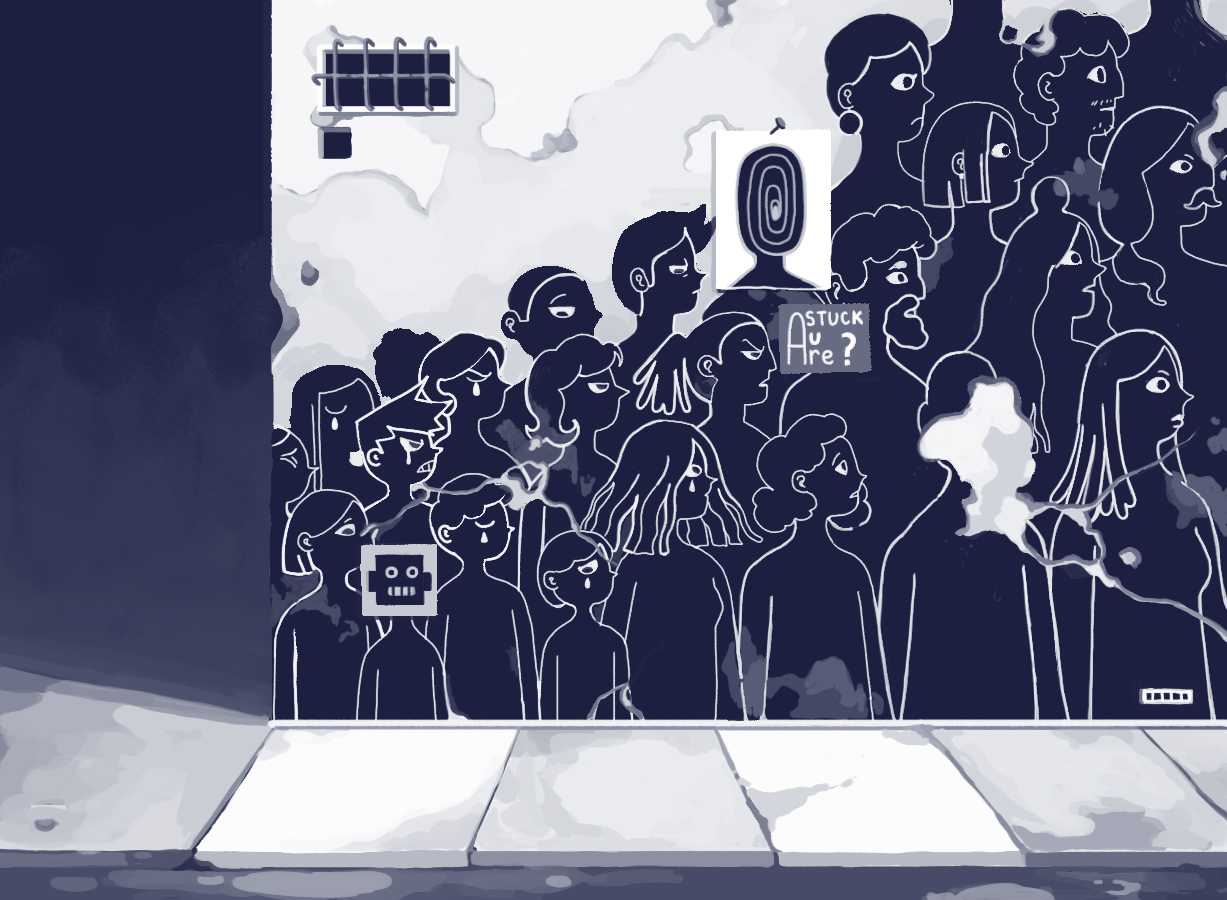
The artwork in this series has its own story – using an Australian rhino beetle to illustrate metamorphosis and recovery
Published 26 November 2023
Illustrating the impacts and stigma associated with domestic homicide is challenging. There are privacy and identification issues and the sheer horror of the crime itself.
And importantly, there is the need for understanding and respect for the young people and adults who spoke to us about their childhood as part of our research.
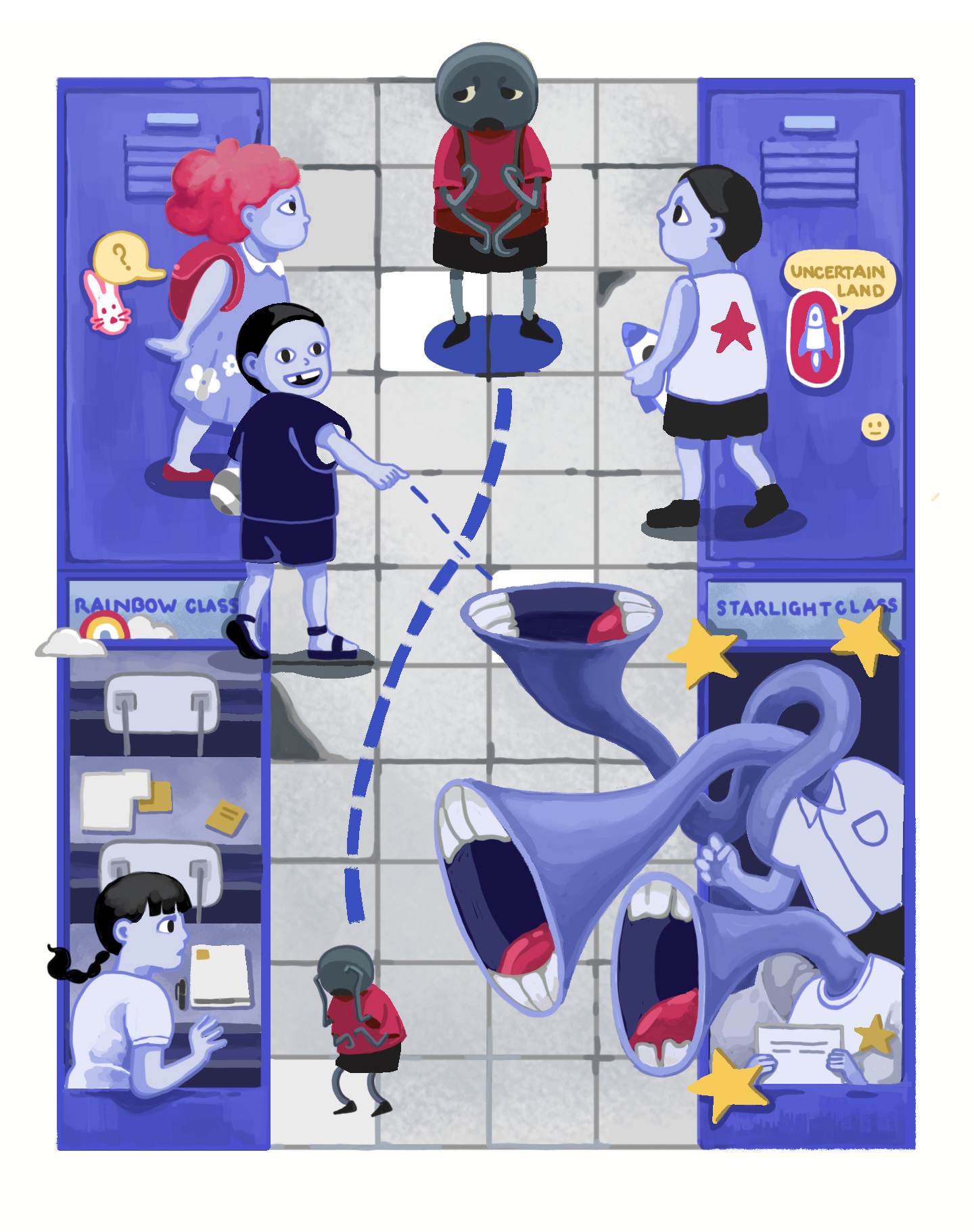
Our illustrations have been developed in a collaborative process, together with people who lost a parent due to domestic homicide and our research team. The images have been drawn by artist and designer, Thu Huong Nguyen (Abigail).
Abigail is a visual artist who uses surreal imagery to illustrate social issues such as immigration, climate change, urban loneliness, depression and horror. In 2022, she won both RMIT’s Frederick Sterne Memorial Award, which recognises the best final year student, and the Artichoke Magazine Prize for Design Communication.
The main character in Abigail’s beautiful and moving pictures is a rhino beetle, an animal chosen for its experience of metamorphosis.
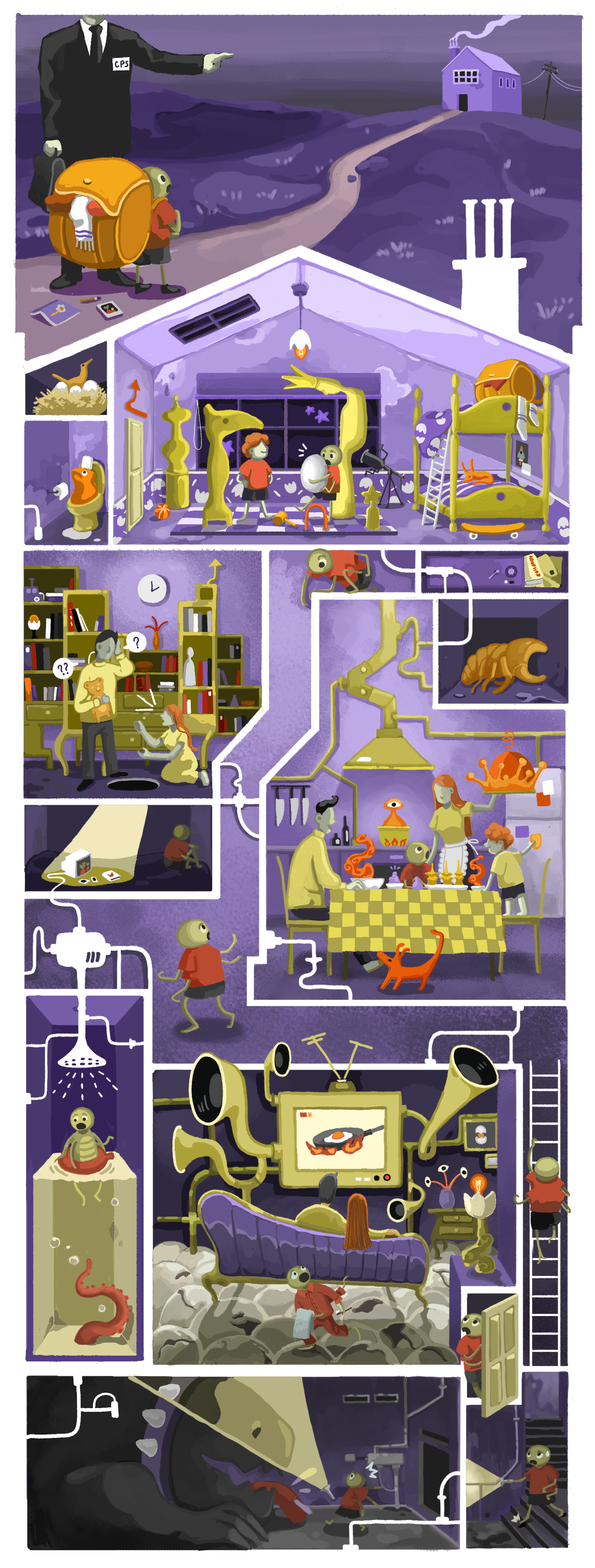
It’s one of the largest beetles worldwide and goes through multiple stages of development, some of which can take years.
We wanted this little character to represent ‘any child’, inclusive of any gender, race or class. A creature that isn’t human but has similarities can resonate with a broad range of viewers.
A human character would have required decisions about ‘features’, leading to exclusion of others (even though a rhino beetle obviously also has features and characteristics of its own. We hope that our biology colleagues excuse us).

The journey of our rhino beetle conveys that people’s experiences in the aftermath are far from a ‘linear recovery’. Rather, some experiences are cyclical, presenting similar challenges in different ways over time.
Our colleagues with lived experience were clear that there is no single or linear trajectory, but rather a lifelong process.
The illustrations are stories of their own, carrying multiple aspects of the complex environments that children, young people and adults with lived experience of domestic homicide are confronted with daily.
Rhino beetles also have impressive strength, although we shouldn’t pressure them – or the children they represent here – to fit into a narrative of being extraordinarily resilient.
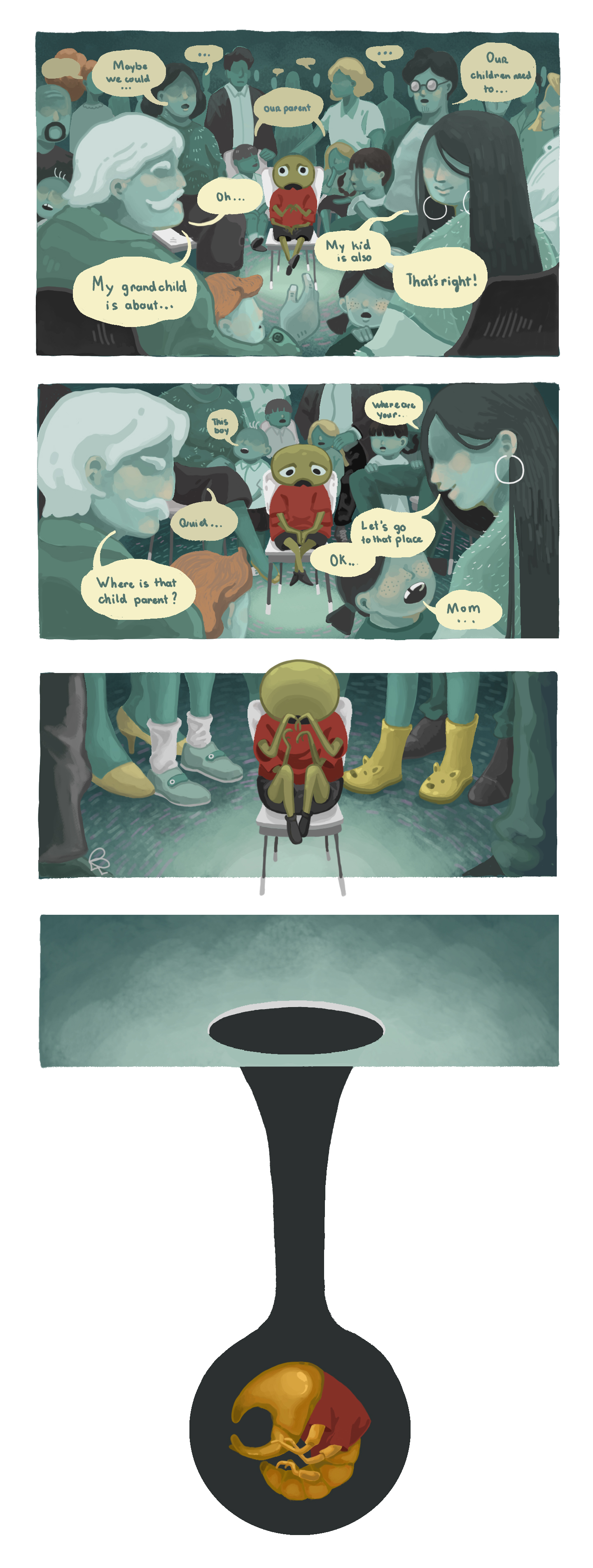
Nevertheless, this process involves change and metamorphosis. And the rhino beetle shows that well, don’t you think?
This article is part of a series on the impact of domestic homicide on children and young people. While there are usually one or two authors mentioned, the whole research team and several people with lived experience have contributed. The illustrations have been hand drawn by Thu Huong Nguyen (Abigail). The research report contains further information.
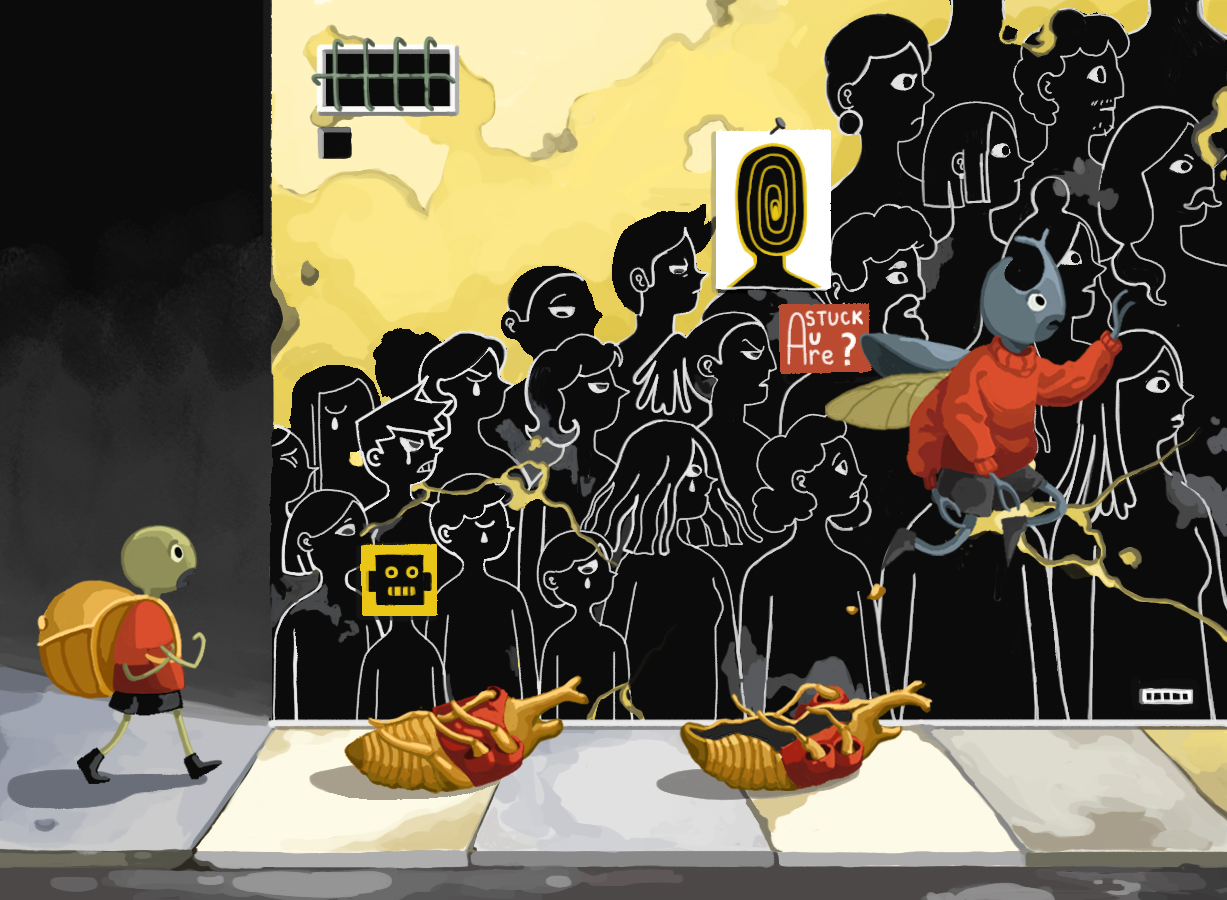
Are you looking for support? In Australia, good places to start are Kids Helpline, Life Line, Beyond Blue and 1800 Respect. These are all free of charge. You can also contact your doctor (GP) to discuss a subsidised Mental Health Treatment Plan, and you may be able to access counselling through your employer’s Employee Assistance Program (EAP) or your TAFE/university’s counselling services. You may also be eligible for support, counselling or financial assistance through your state or territory Victims of Crime service.
Are you keen to connect with peers? If you have lost a parent due to fatal family violence, we can connect you with peers with lived experience. Please send an email.
Banner: Thu Huong Nguyen (Abigail)

